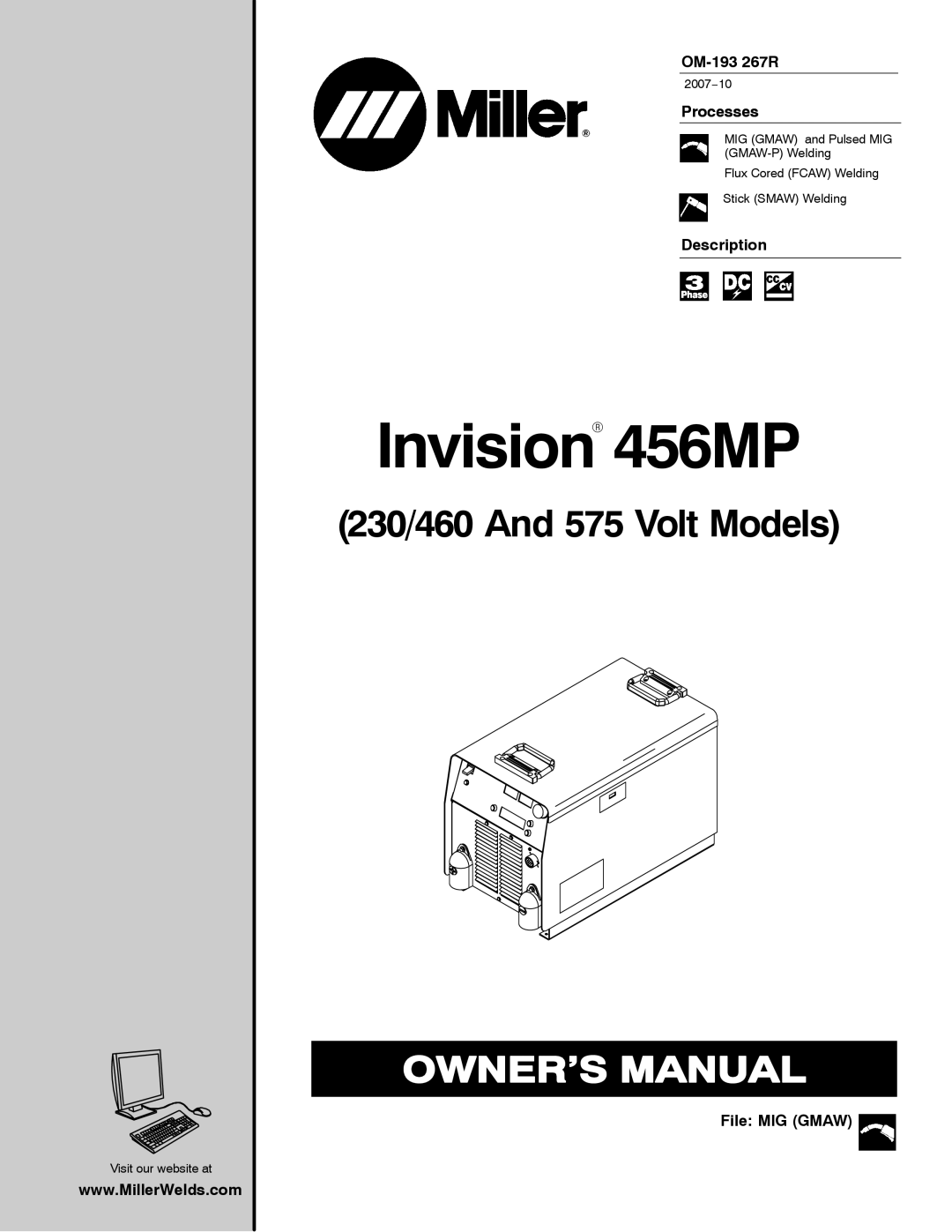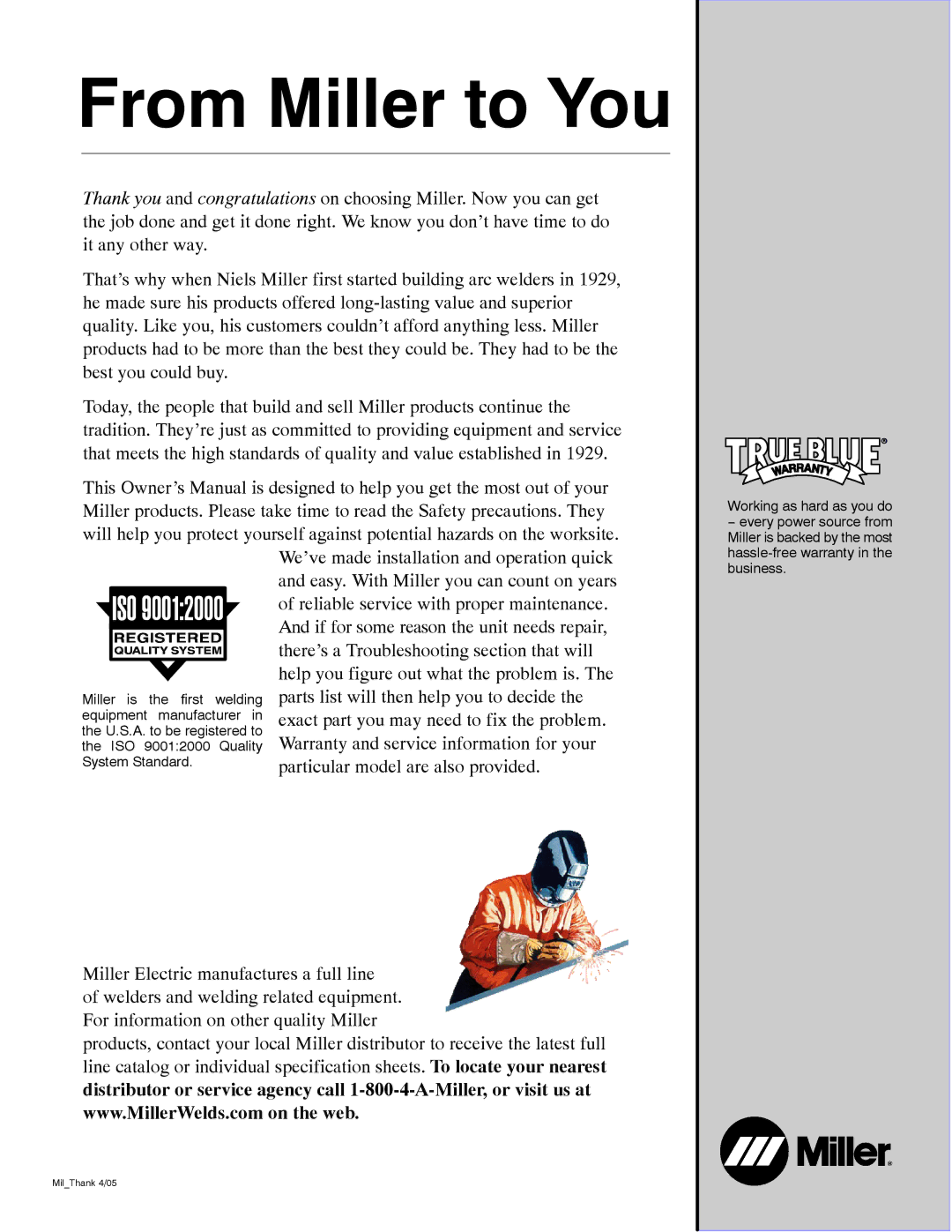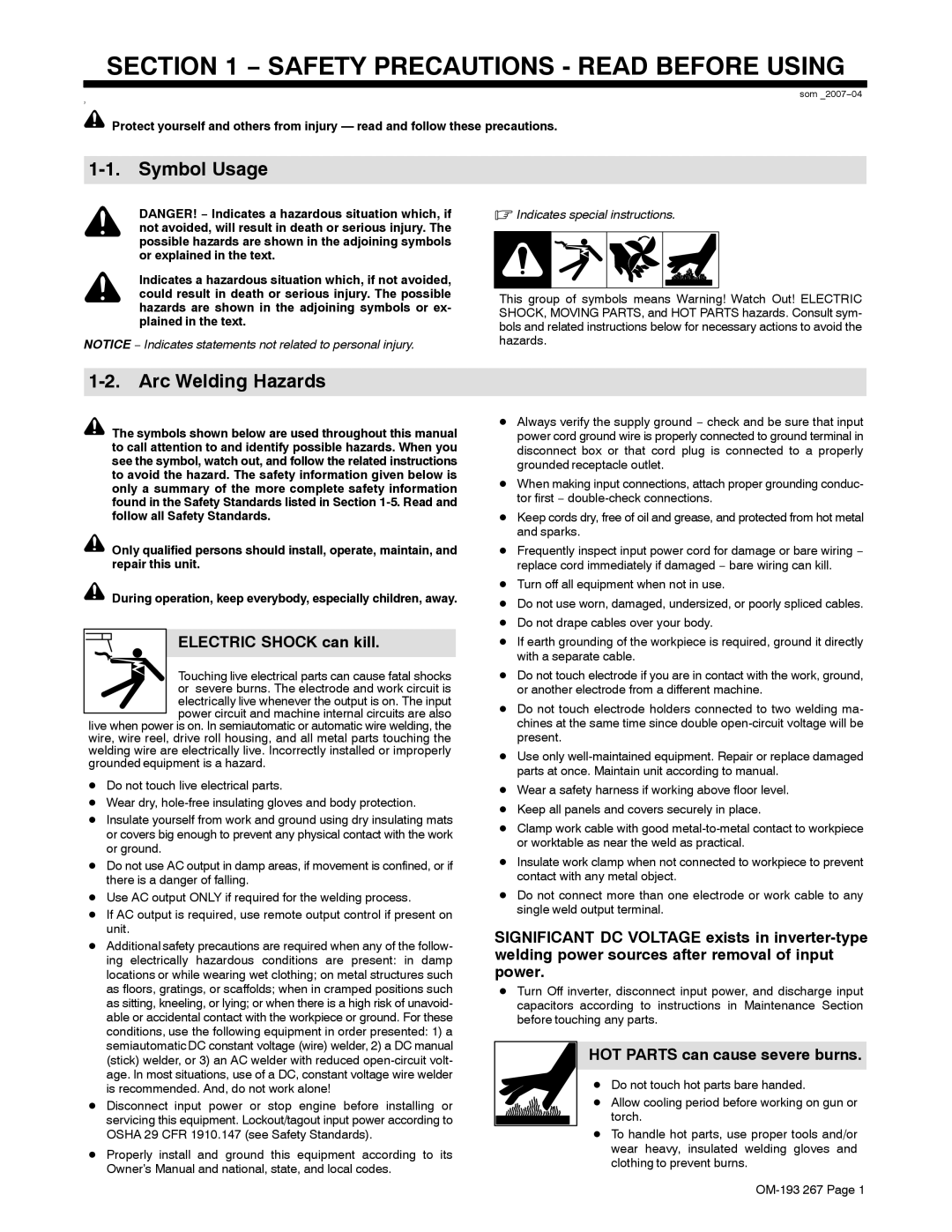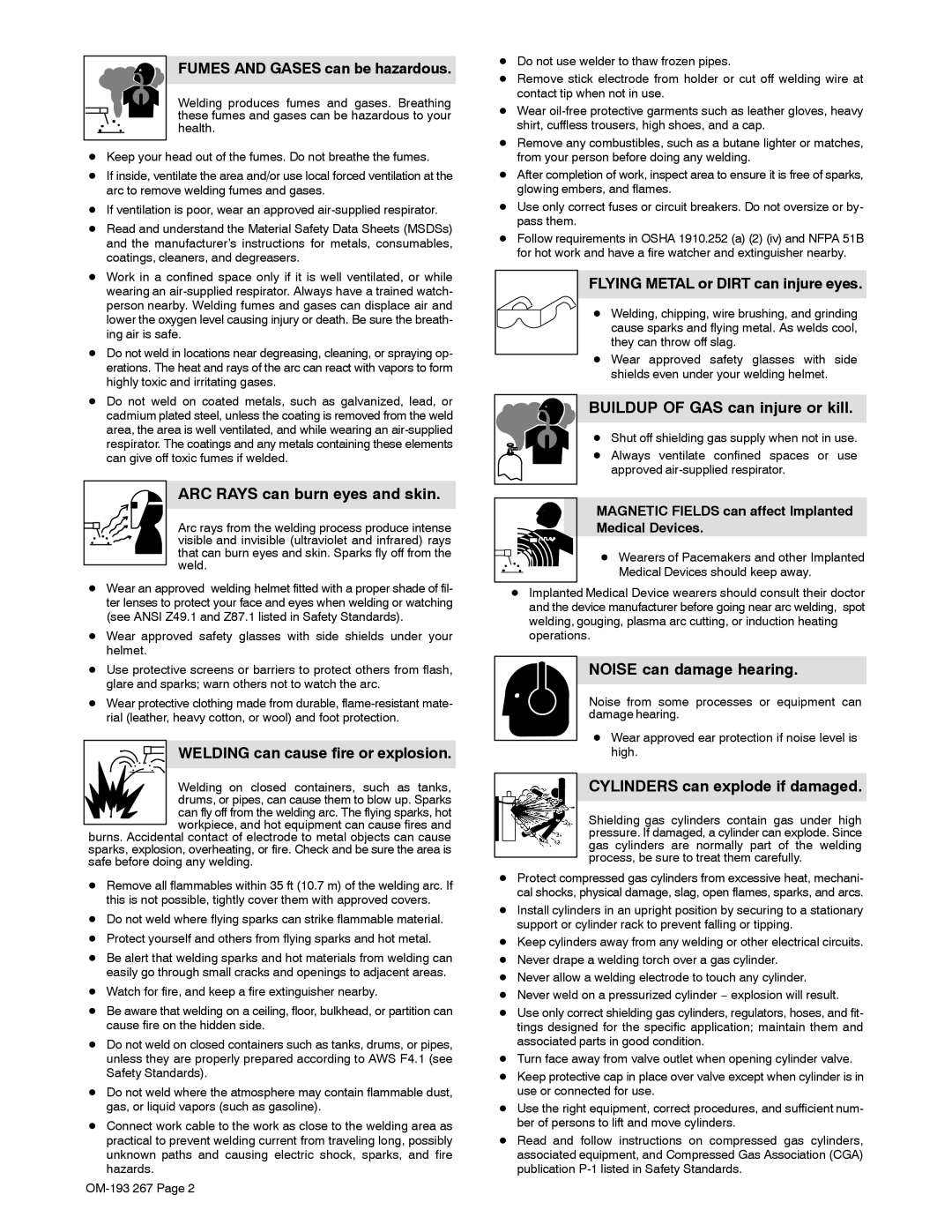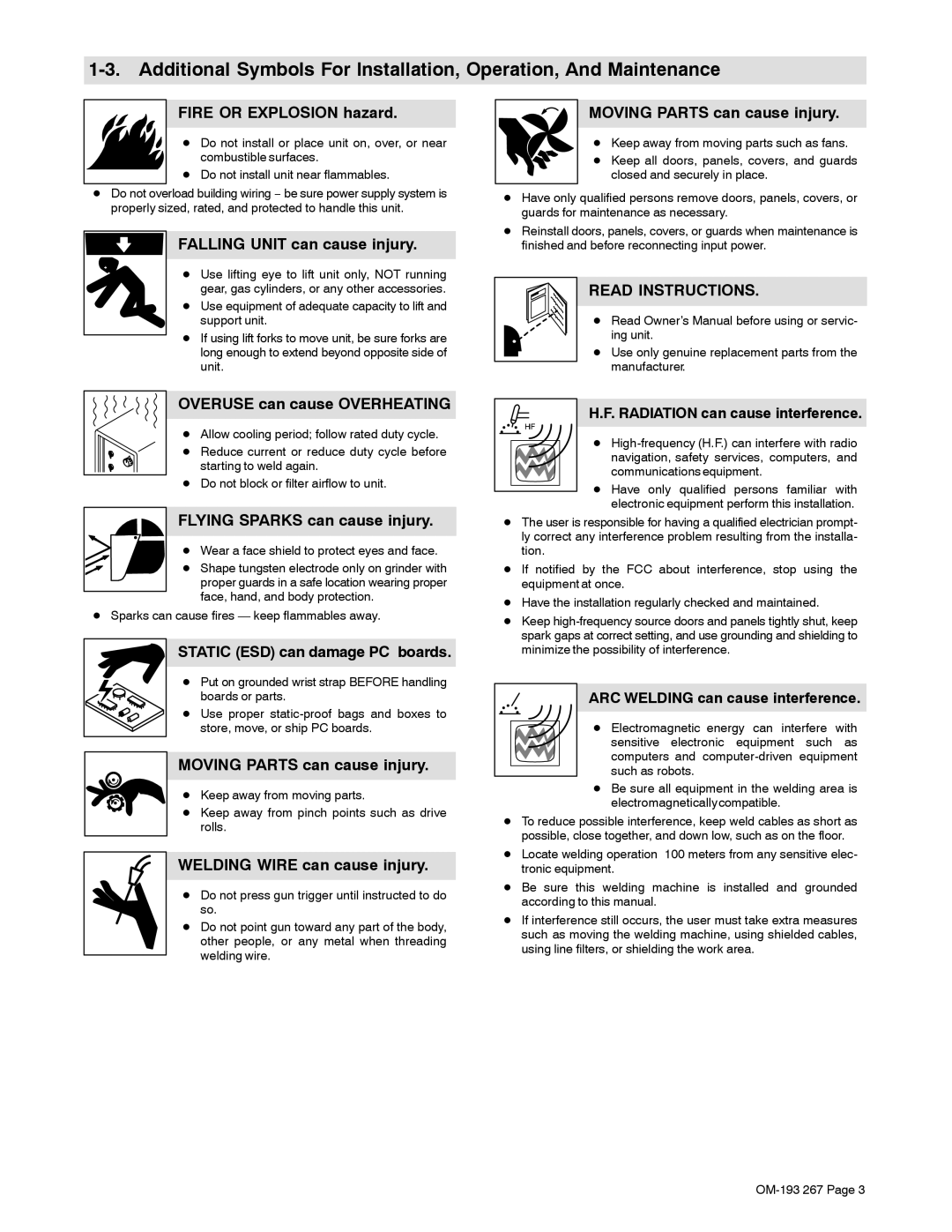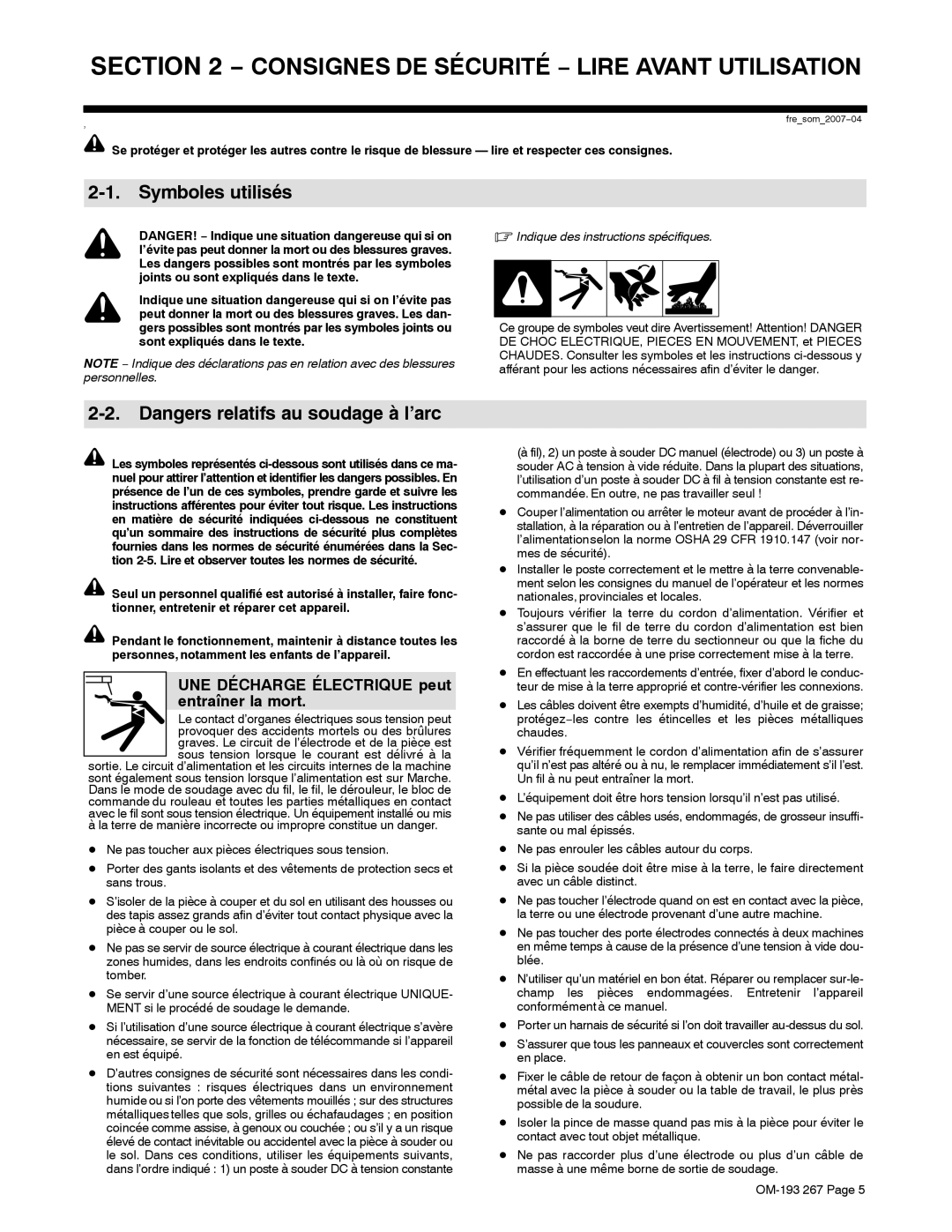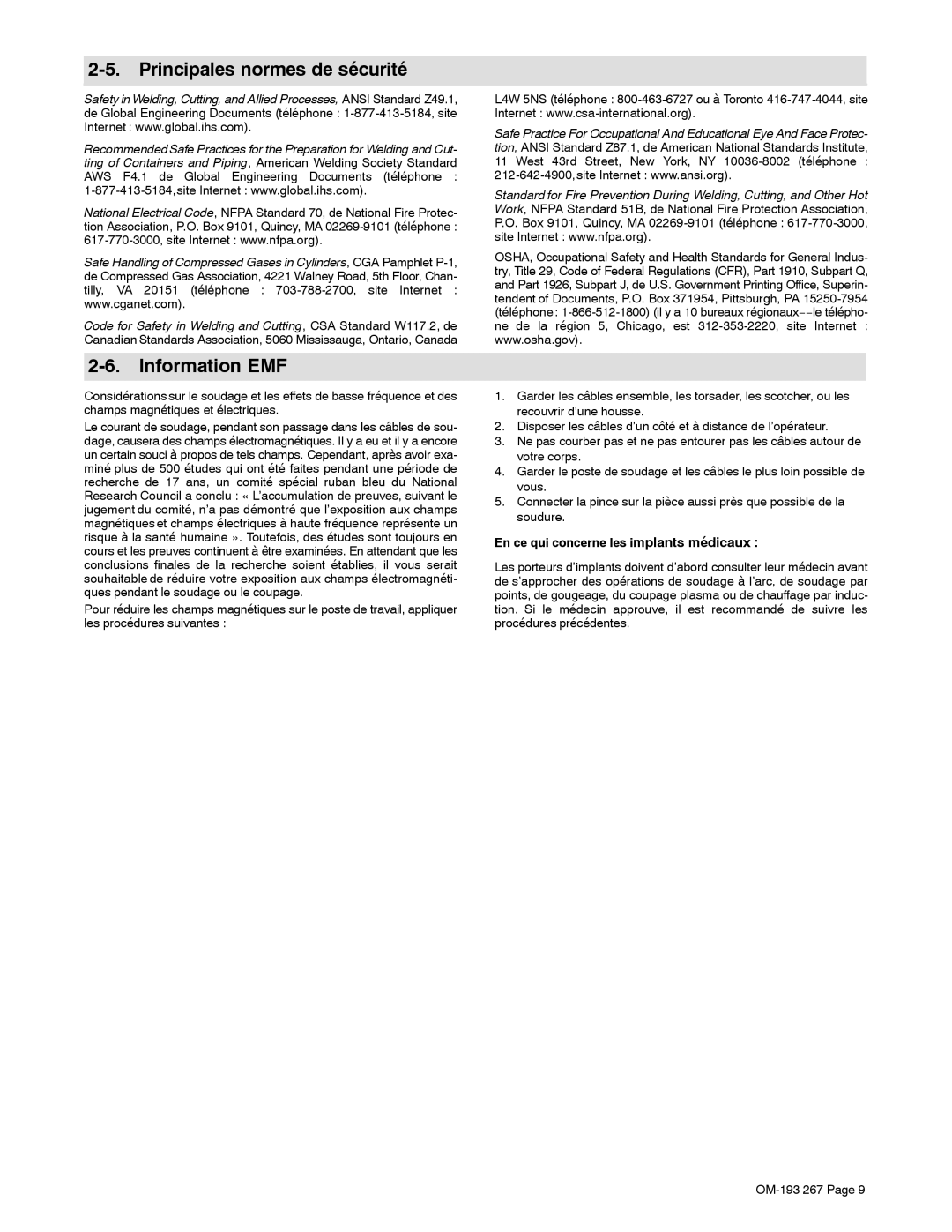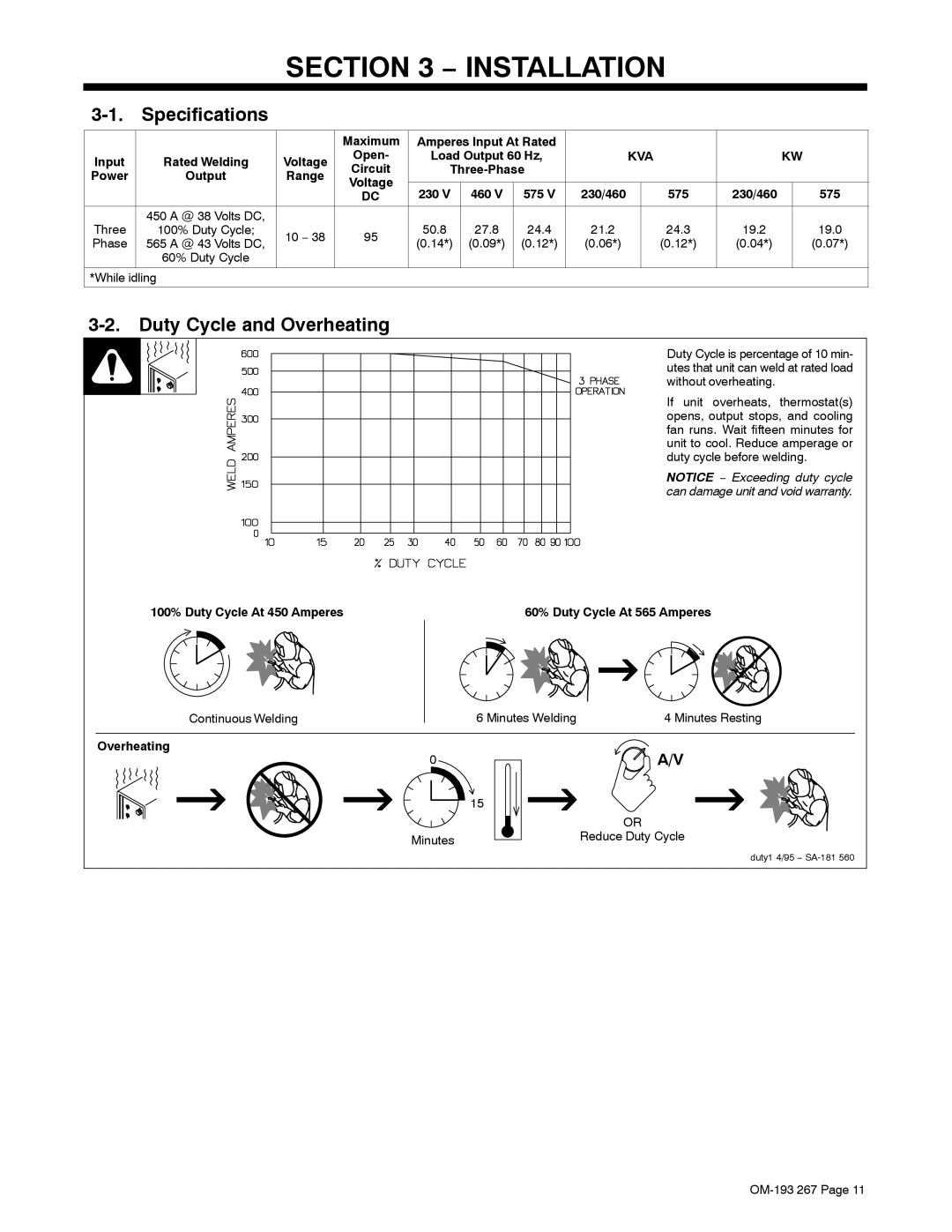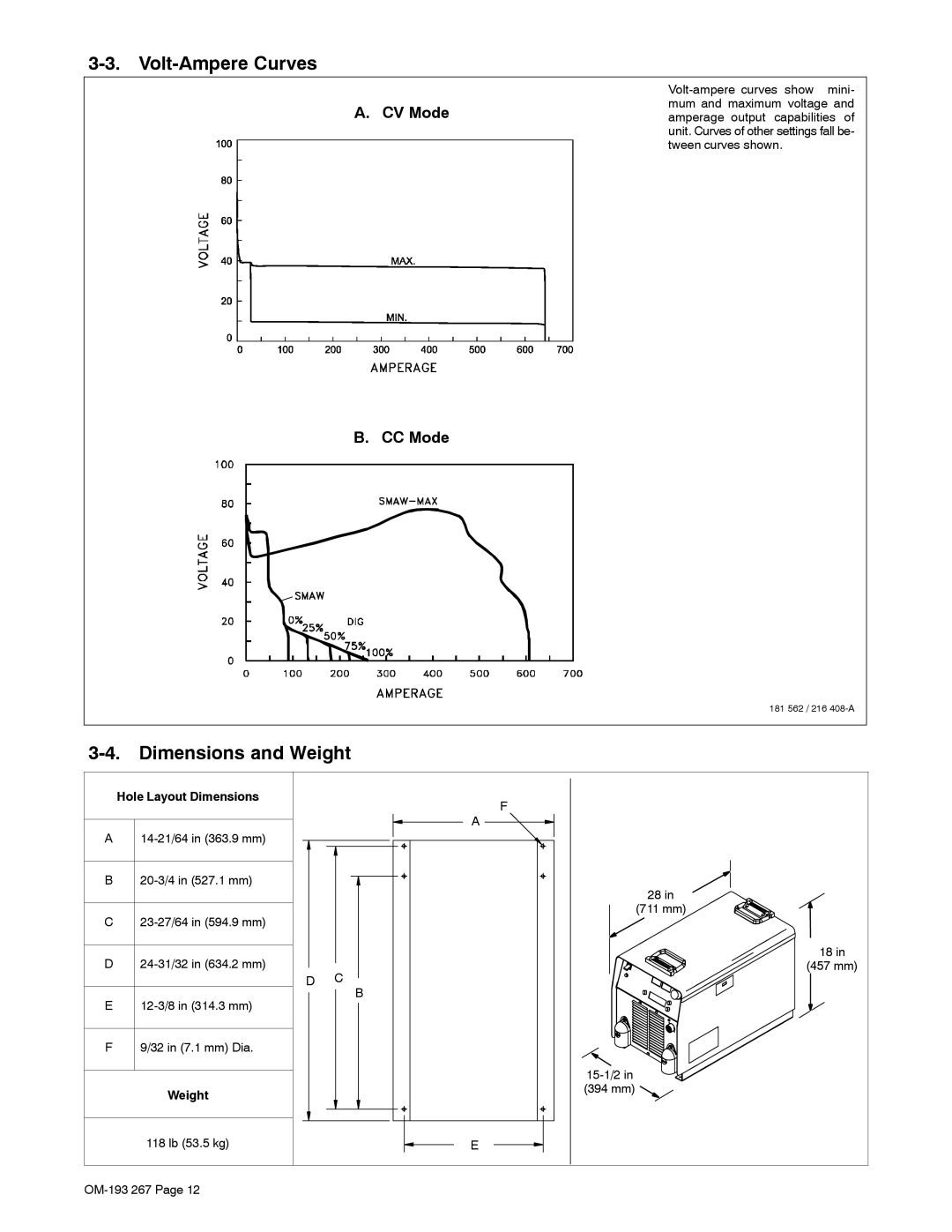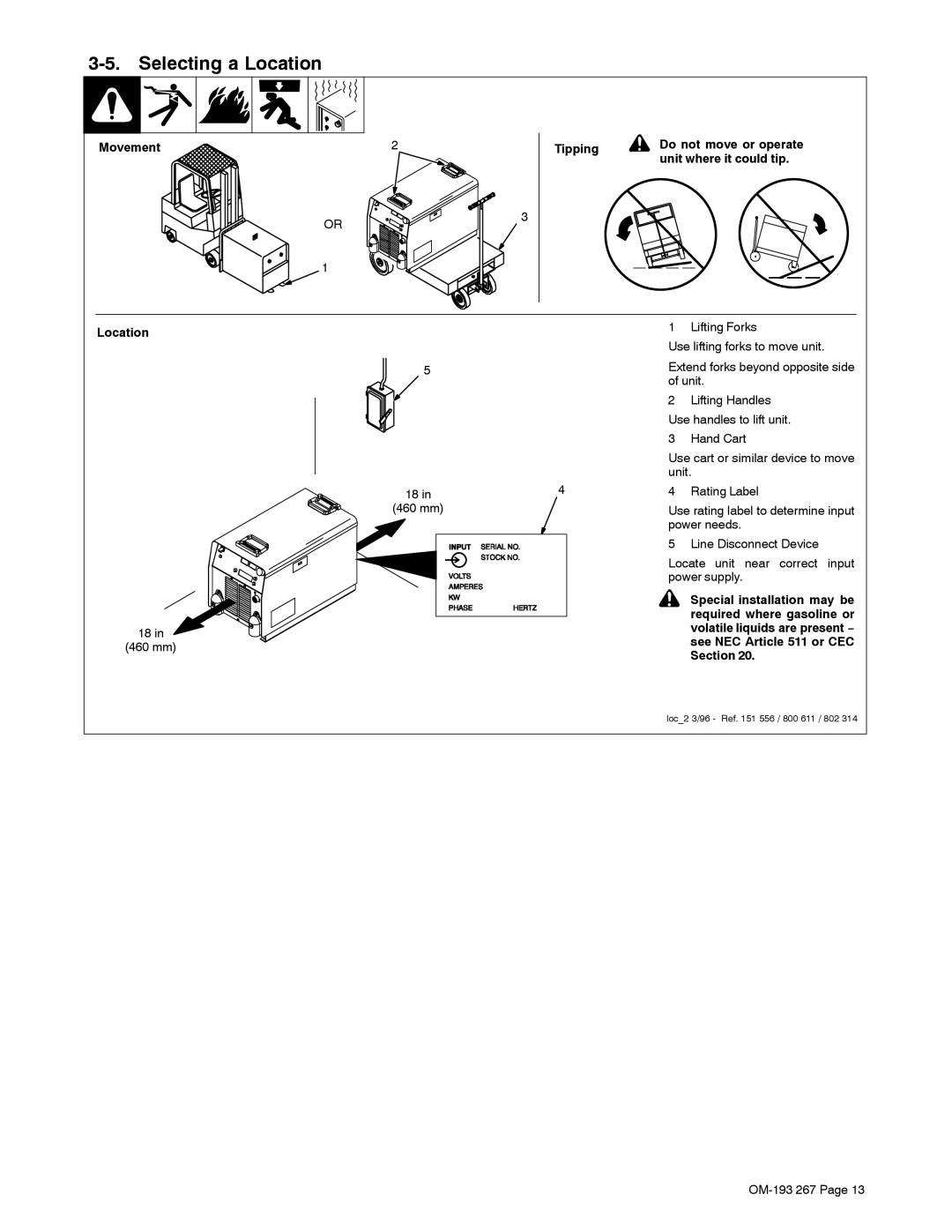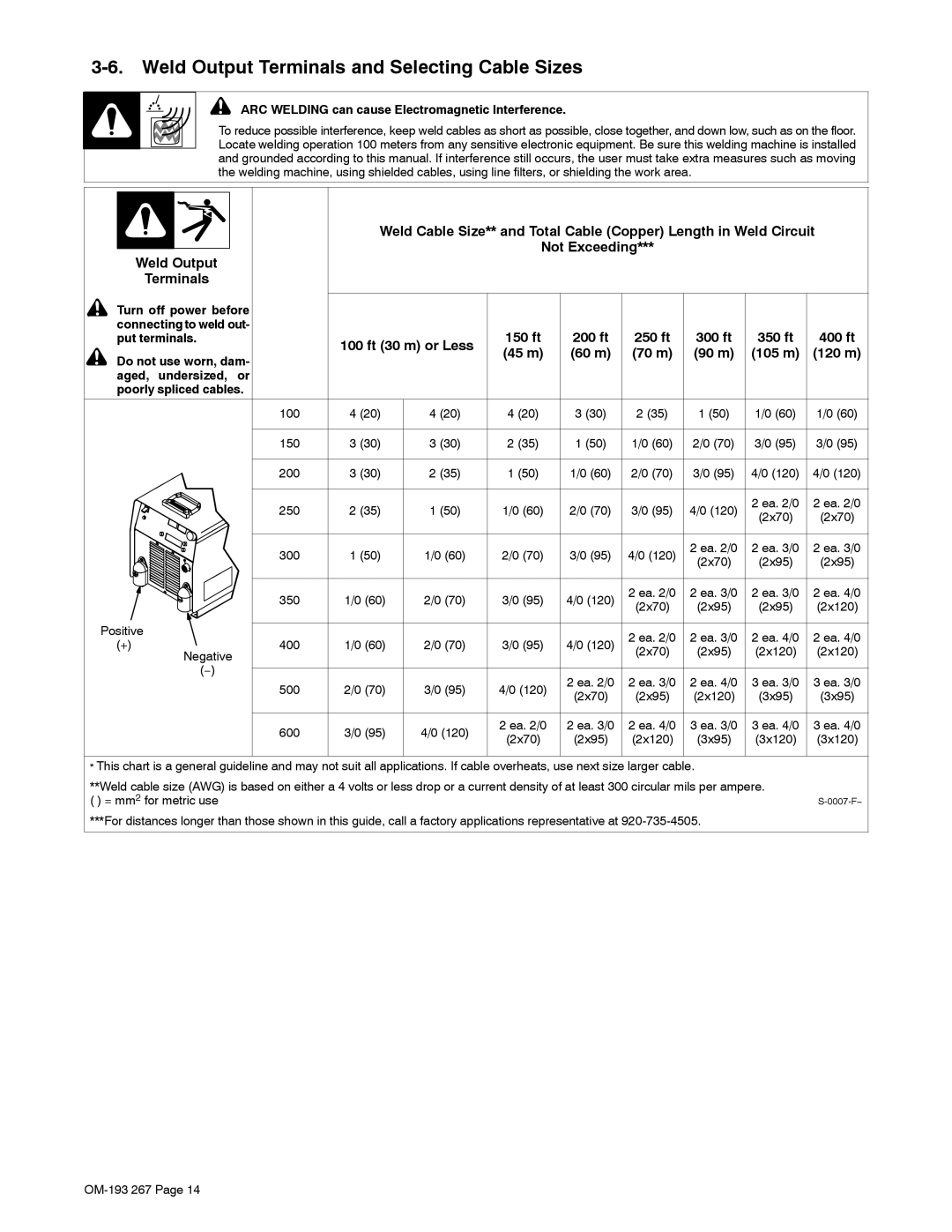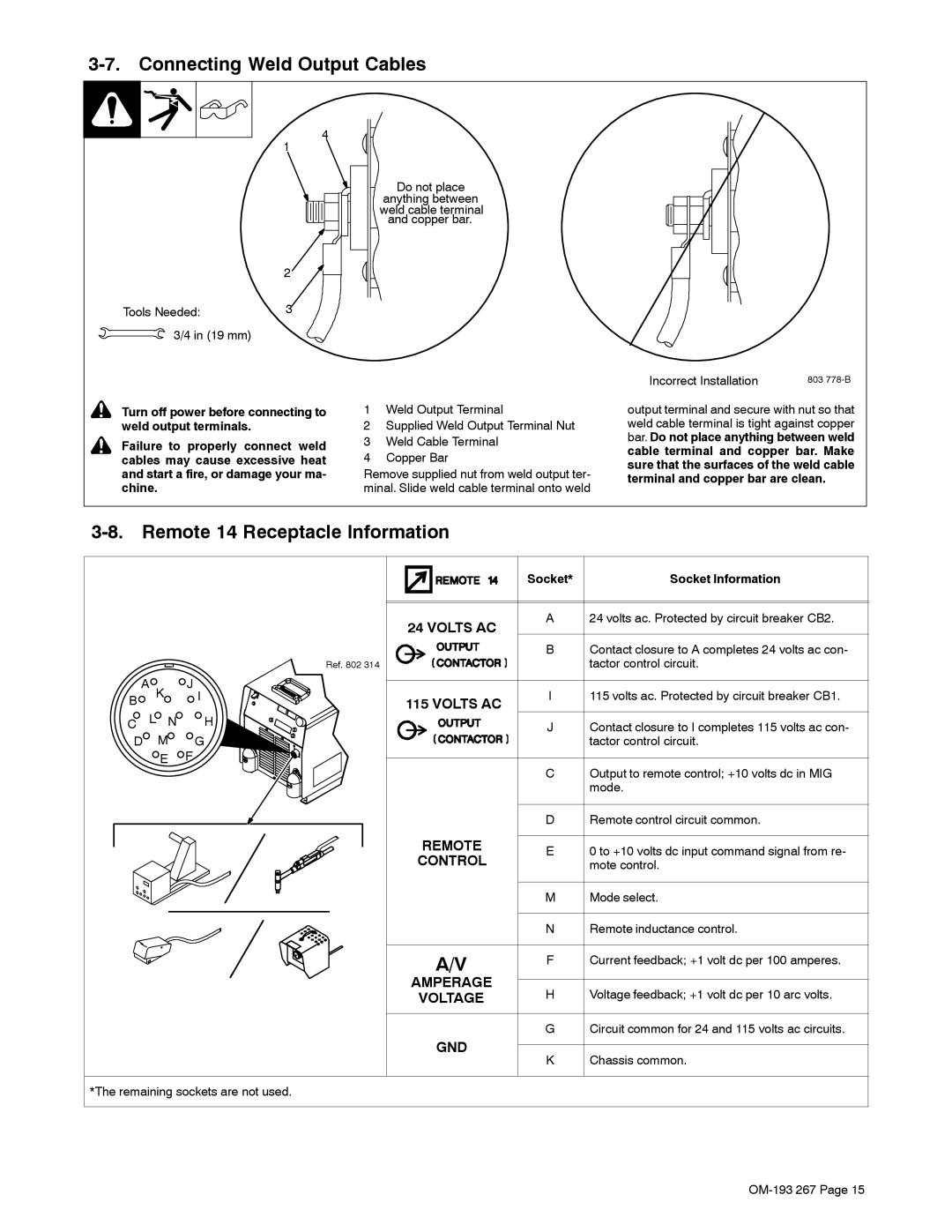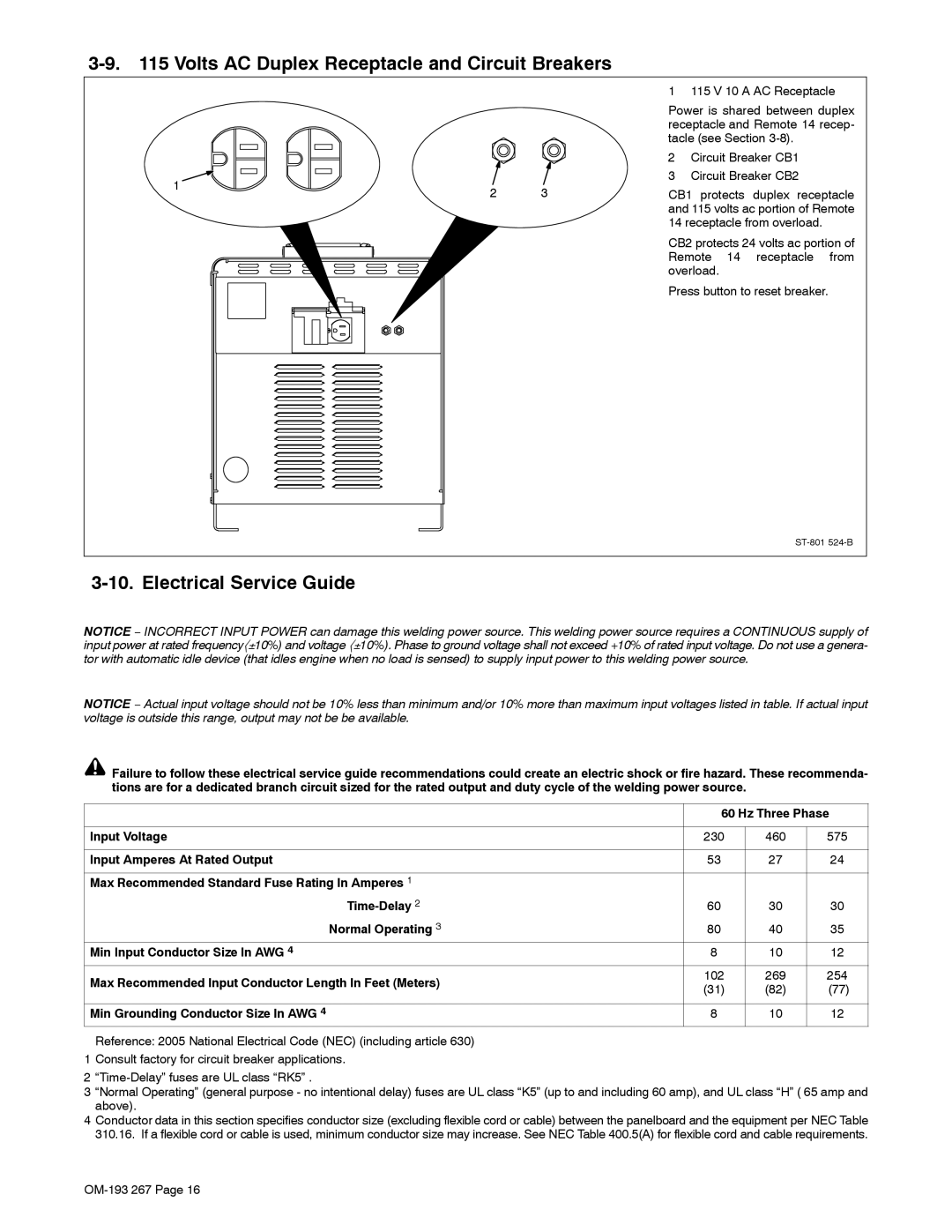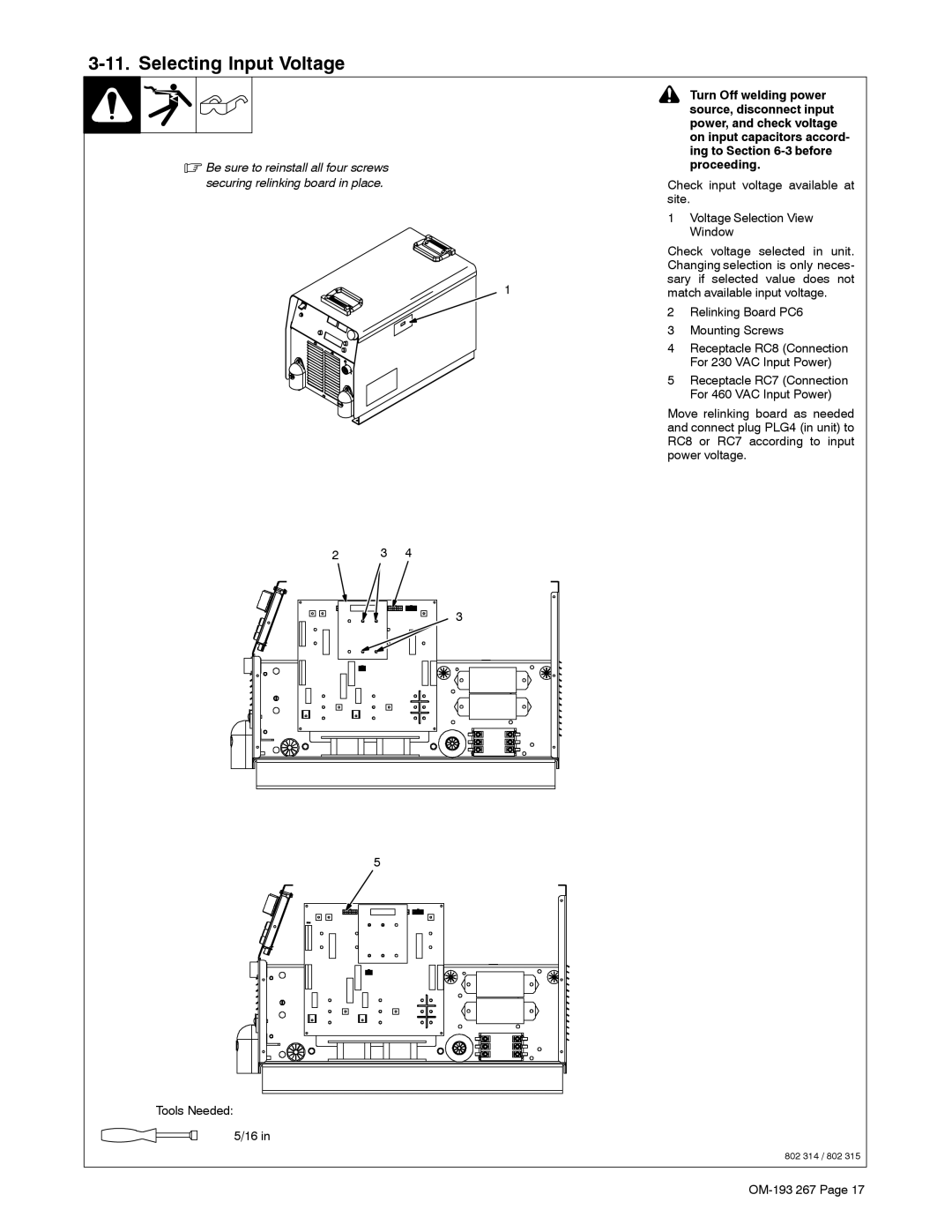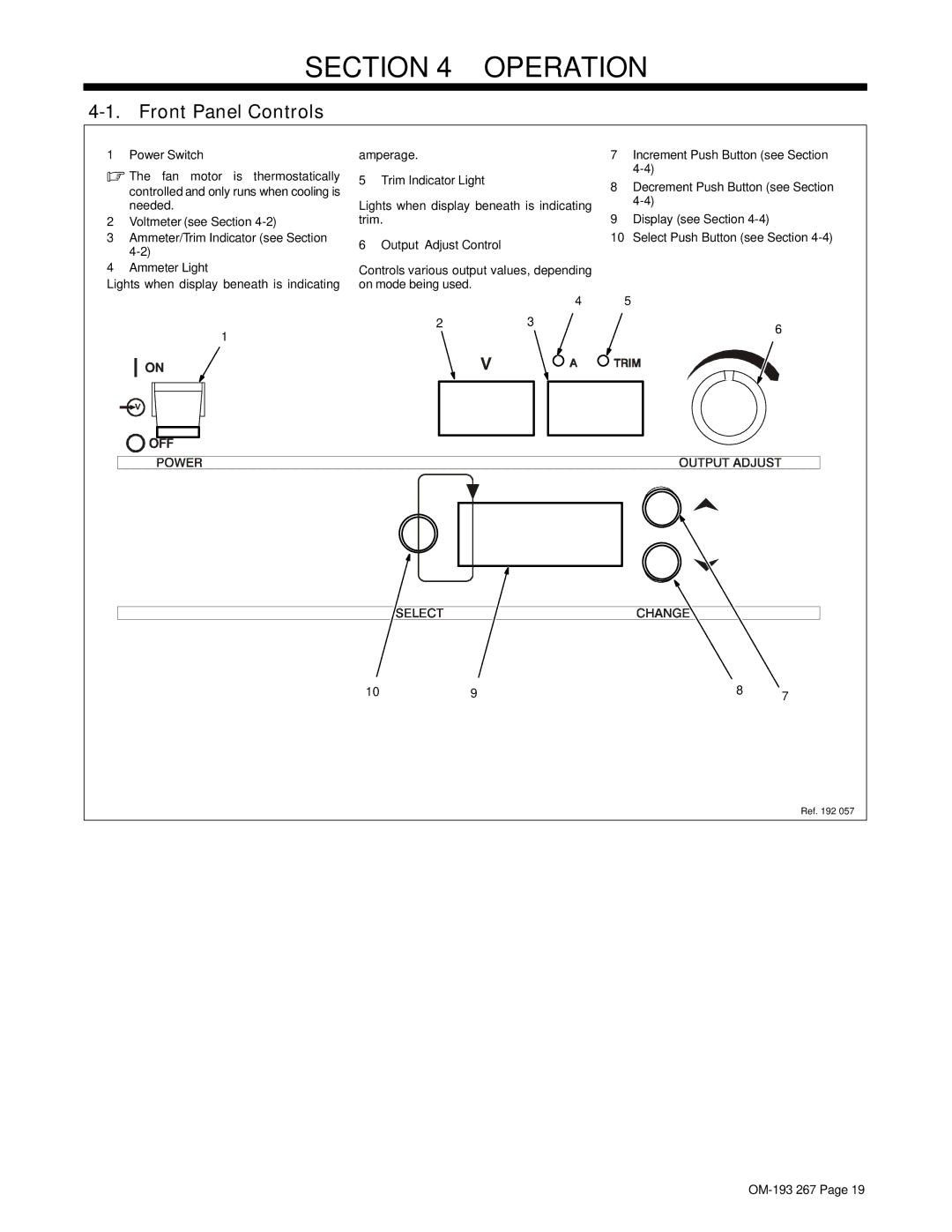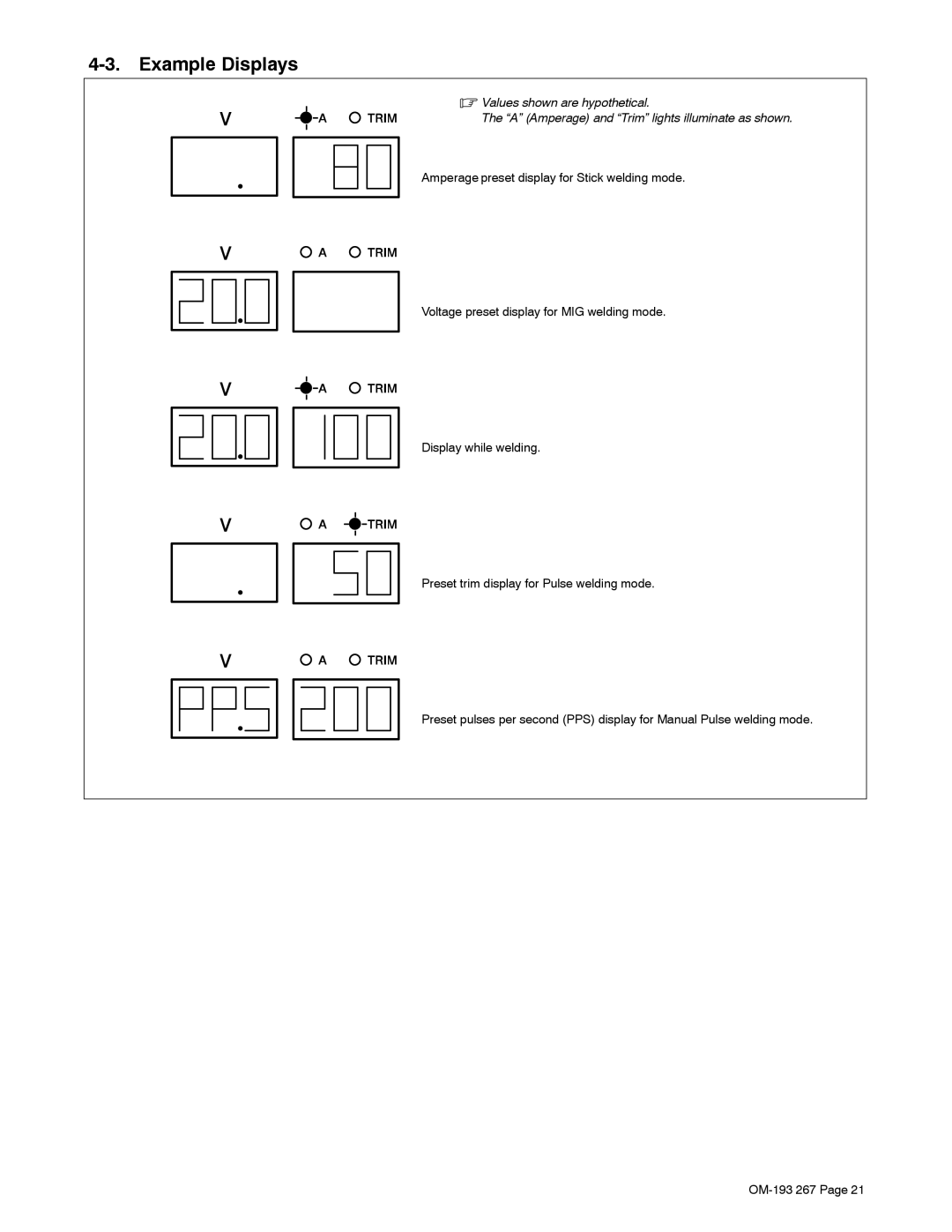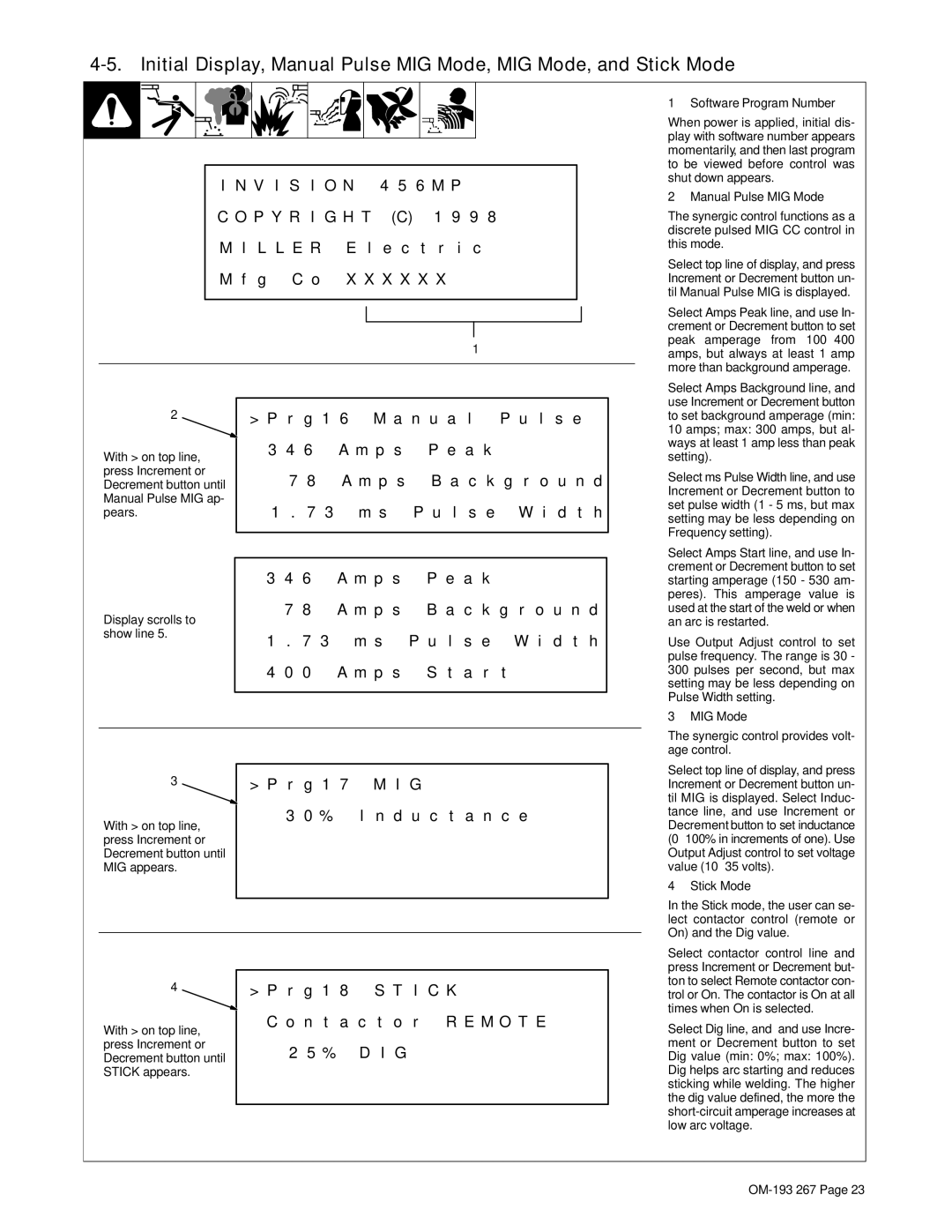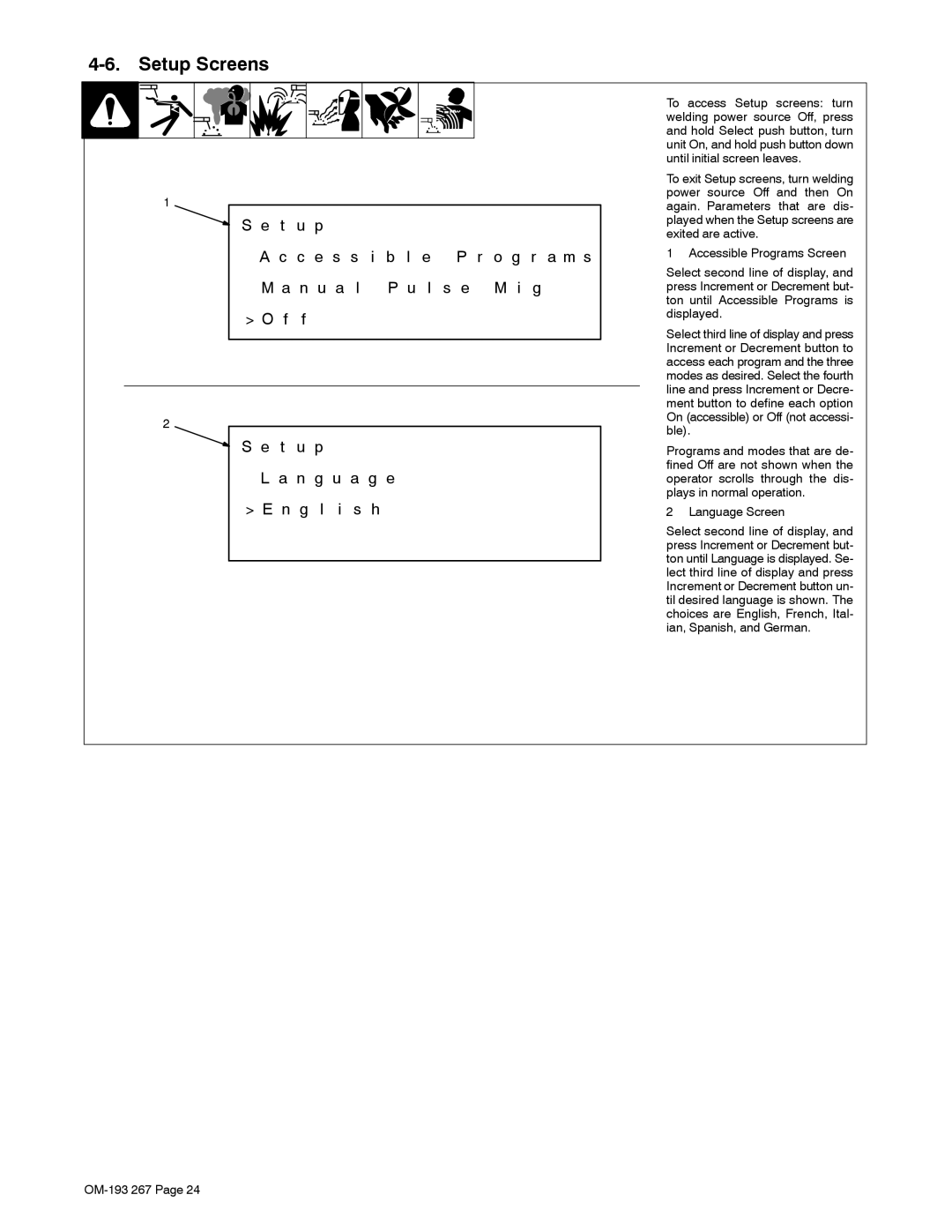
SECTION 1 − SAFETY PRECAUTIONS - READ BEFORE USING
som _2007−04
7
Protect yourself and others from injury — read and follow these precautions.
1-1. Symbol Usage
DANGER! − Indicates a hazardous situation which, if not avoided, will result in death or serious injury. The possible hazards are shown in the adjoining symbols or explained in the text.
Indicates a hazardous situation which, if not avoided, could result in death or serious injury. The possible hazards are shown in the adjoining symbols or ex- plained in the text.
NOTICE − Indicates statements not related to personal injury.
1-2. Arc Welding Hazards
.Indicates special instructions.
This group of symbols means Warning! Watch Out! ELECTRIC SHOCK, MOVING PARTS, and HOT PARTS hazards. Consult sym- bols and related instructions below for necessary actions to avoid the hazards.
![]() The symbols shown below are used throughout this manual to call attention to and identify possible hazards. When you see the symbol, watch out, and follow the related instructions to avoid the hazard. The safety information given below is only a summary of the more complete safety information found in the Safety Standards listed in Section
The symbols shown below are used throughout this manual to call attention to and identify possible hazards. When you see the symbol, watch out, and follow the related instructions to avoid the hazard. The safety information given below is only a summary of the more complete safety information found in the Safety Standards listed in Section
![]() Only qualified persons should install, operate, maintain, and repair this unit.
Only qualified persons should install, operate, maintain, and repair this unit.
![]() During operation, keep everybody, especially children, away.
During operation, keep everybody, especially children, away.
ELECTRIC SHOCK can kill.
Touching live electrical parts can cause fatal shocks or severe burns. The electrode and work circuit is electrically live whenever the output is on. The input power circuit and machine internal circuits are also
live when power is on. In semiautomatic or automatic wire welding, the wire, wire reel, drive roll housing, and all metal parts touching the welding wire are electrically live. Incorrectly installed or improperly grounded equipment is a hazard.
DDo not touch live electrical parts.
DWear dry,
DInsulate yourself from work and ground using dry insulating mats or covers big enough to prevent any physical contact with the work or ground.
DDo not use AC output in damp areas, if movement is confined, or if there is a danger of falling.
DUse AC output ONLY if required for the welding process.
DIf AC output is required, use remote output control if present on unit.
DAdditional safety precautions are required when any of the follow- ing electrically hazardous conditions are present: in damp locations or while wearing wet clothing; on metal structures such as floors, gratings, or scaffolds; when in cramped positions such as sitting, kneeling, or lying; or when there is a high risk of unavoid- able or accidental contact with the workpiece or ground. For these conditions, use the following equipment in order presented: 1) a semiautomatic DC constant voltage (wire) welder, 2) a DC manual (stick) welder, or 3) an AC welder with reduced
DDisconnect input power or stop engine before installing or servicing this equipment. Lockout/tagout input power according to OSHA 29 CFR 1910.147 (see Safety Standards).
DProperly install and ground this equipment according to its Owner’s Manual and national, state, and local codes.
DAlways verify the supply ground − check and be sure that input power cord ground wire is properly connected to ground terminal in disconnect box or that cord plug is connected to a properly grounded receptacle outlet.
DWhen making input connections, attach proper grounding conduc- tor first −
DKeep cords dry, free of oil and grease, and protected from hot metal and sparks.
DFrequently inspect input power cord for damage or bare wiring − replace cord immediately if damaged − bare wiring can kill.
DTurn off all equipment when not in use.
DDo not use worn, damaged, undersized, or poorly spliced cables.
DDo not drape cables over your body.
DIf earth grounding of the workpiece is required, ground it directly with a separate cable.
DDo not touch electrode if you are in contact with the work, ground, or another electrode from a different machine.
DDo not touch electrode holders connected to two welding ma- chines at the same time since double
DUse only
DWear a safety harness if working above floor level.
DKeep all panels and covers securely in place.
DClamp work cable with good
DInsulate work clamp when not connected to workpiece to prevent contact with any metal object.
DDo not connect more than one electrode or work cable to any single weld output terminal.
SIGNIFICANT DC VOLTAGE exists in
DTurn Off inverter, disconnect input power, and discharge input capacitors according to instructions in Maintenance Section before touching any parts.
HOT PARTS can cause severe burns.
DDo not touch hot parts bare handed.
DAllow cooling period before working on gun or
torch.
DTo handle hot parts, use proper tools and/or wear heavy, insulated welding gloves and clothing to prevent burns.
